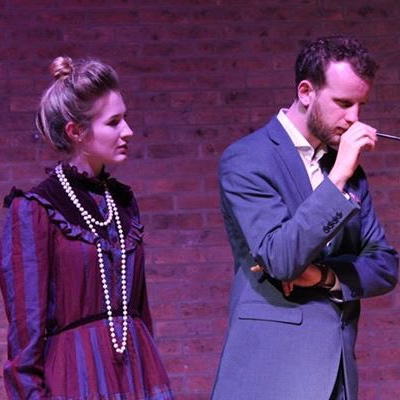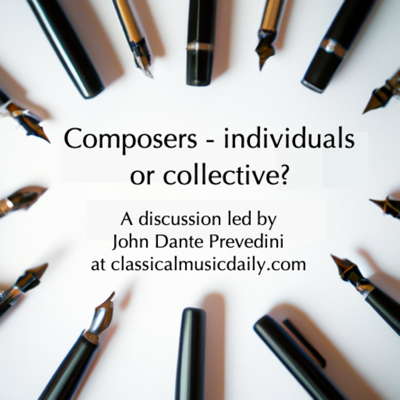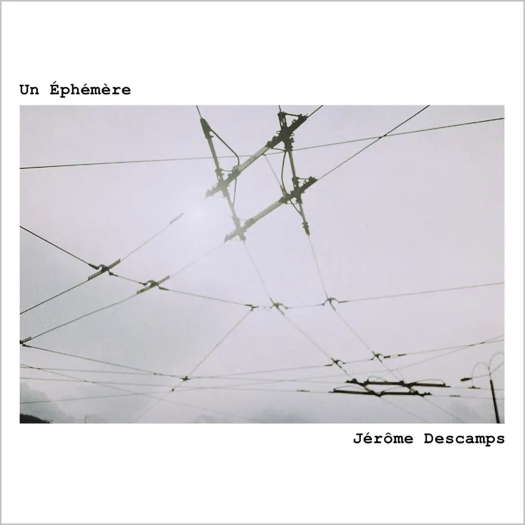- Colin Brumby
- percussionist
- Philharmonia
- Graziella Sciutti
- Ester Mägi
- Festival O
- Sebastian Chang
- Stephen Hagan
 SPONSORED: Ensemble. A Great Start - Freddie Meyers' new opera A Sketch of Slow Time impresses Alice McVeigh.
SPONSORED: Ensemble. A Great Start - Freddie Meyers' new opera A Sketch of Slow Time impresses Alice McVeigh.
All sponsored features >>
 DISCUSSION: John Dante Prevedini leads a discussion about Composers, individuals or collective?, including contributions from David Arditti, Halida Dinova, Robert McCarney and Jane Stanley.
DISCUSSION: John Dante Prevedini leads a discussion about Composers, individuals or collective?, including contributions from David Arditti, Halida Dinova, Robert McCarney and Jane Stanley.

Grammars of Space
JOHN DANTE PREVEDINI explores the music of composer and multi-instrumentalist Jérôme Descamps
'... a testament to the powers available to the resourceful composer-performer in the contemporary chamber idiom.'
Un éphémère is the recent release from Arpaviva Recordings of seven single-movement works composed and performed by Tahiti-based French composer and multi-instrumentalist Jérôme Descamps. The pieces, each spanning two to three minutes in length, feature Descamps on trombone, cello and xylorimba in various combinations. The seventeen-minute album is available in digital format, and the booklet - accessible directly from the label website - includes introductory notes by, and an interview with, the composer. Here, Descamps describes the influence of free jazz on his contemporary classical idiom, and he recounts the process of recording the album as a journey of introspection characterized by 'playing freely and letting the sound take over'.
The album opens with Un éphémère for unaccompanied solo trombone, a piece characterized by isolated sustained notes punctuated by silence. A quasi-motif of two notes spanning a semitone becomes the basis for variation over the course of two minutes, as slow glissandi and timbral variations - such as growling and changing mouth shapes - add another layer of structural variety to the sound world.
The next track is La danse du paon for muted trombone and cello. Here the cello is played sempre pizzicato, in the manner of an acoustic jazz bass. Yet the mid-tempo composition transcends the traditional designation of roles implied by the combo jazz idiom evoked by these instrumental timbres. While the cello initially assumes an apparent harmonic accompaniment role, it then breaks from it at unpredictable intervals of time to engage in free imitative counterpoint with the trombone. The cello then lingers at the end, playing a fragment of a 'bass line' after the trombone has already trailed off, thus creating the suspenseful effect of something left deliberately unfinished.
Listen — Jérôme Descamps: La danse du paon
(AV 005DL track 2, 0:00-0:30) ℗ 2023 Arpaviva Recordings :
Track three, Compos(t), pairs trombone with cello again, this time with the latter played arco on frequent double stops. Here, the motivic content from the first track seems to be paired with the rhythmic and formal development from the second track. In addition, the trombone explores some of its highest registers, with the resulting audible straining contributing to the artistic effect of what might be called a deliberately 'tense' sonic experience.
In track four, Etoiles inconnues, we hear a trio of trombone with cello and xylorimba. The cello plays pizzicato as in track two, on long slow notes, while the xylorimba takes on more of a fluid role, shifting between rhythmic punctuation and imitative exchange with the trombone's continuous and wide-ranging melody.
Listen — Jérôme Descamps: Etoiles inconnues
(AV 005DL track 4, 0:00-0:30) ℗ 2023 Arpaviva Recordings :
Next is the heavy and aggressive Défardé, which revisits the combination of cello and trombone, though this time it takes the form of a trio with a trombone and two cello parts. Throughout the piece, the two cello parts trade off pizzicato and arco passages to create an aggressive soundscape within which the trombone seems to sound 'trapped'. It is recommended that this piece be enjoyed with headphones, since the effect described here is achieved in the recording largely through the judicious use of channel separation; one cello is on the left, one is on the right and the trombone is in the middle.
Listen — Jérôme Descamps: Défardé
(AV 005DL track 5, 0:00-0:30) ℗ 2023 Arpaviva Recordings :
For the penultimate track, Poésie cachée, we hear a trio of all three instruments in a nearly equal state of freedom at a mid-high tempo. Here, the trombone, xylorimba and cello (played pizzicato) all display elements of melodic, harmonic and rhythmic roles - a balanced sound world which makes this piece stand out amidst the relatively trombone-dominant sound worlds of the other tracks.
The seventh and final piece, Terre, features a duet of trombone and cello (played arco with double stops), a dark and energetic conclusion to the album that seems almost to reverse the roles of the cello and trombone in terms of the registers and gestures hereto associated with the respective instruments.
From its openness of compositional form to its strategic use of silence and instrument placement in the stereo mix, Un éphémère is a multifaceted study of 'space' as an element of musical experience. In this way, Descamps is able to transform a deceptively minimal sound palette into a highly expressive medium for much invention and, especially in light of his illustrative composition titles, vivid phenomenological conveyance. This extends to the overarching structure of the album itself, being indeed 'ephemeral' at seventeen minutes in total with no individual track materially surpassing three minutes.
Of special note is Descamps' role as the sole performer in what is mostly an album of chamber music. The inescapable necessity of audio editing to record a one-person ensemble project like this gives the performer a chance to blend the spontaneous with the deliberate in a special way. Specifically, it lends a 'composed' architecture to the final product while still preserving in each instrumental line the spirit of free improvisation that Descamps sought to explore from the start.
In conclusion, this album is a testament to the powers available to the resourceful composer-performer in the contemporary chamber idiom. It is a document showing the range of expression made possible by discovering - and utilizing - musical space in all of its dimensions.
Copyright © 28 February 2024
John Dante Prevedini,
Connecticut, USA



